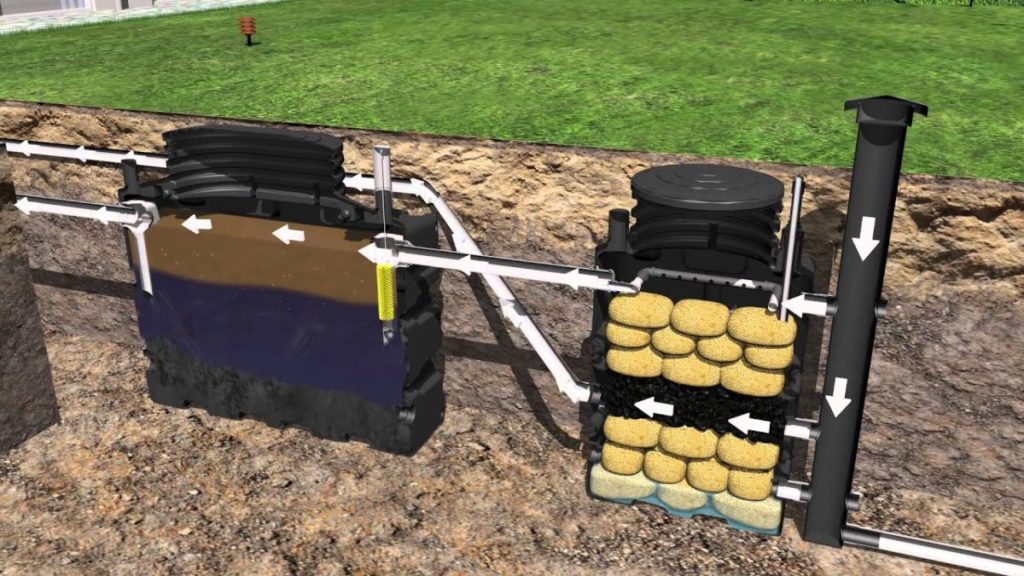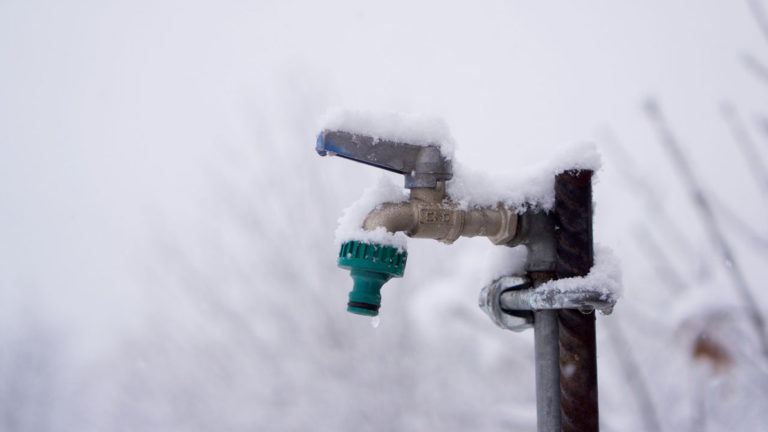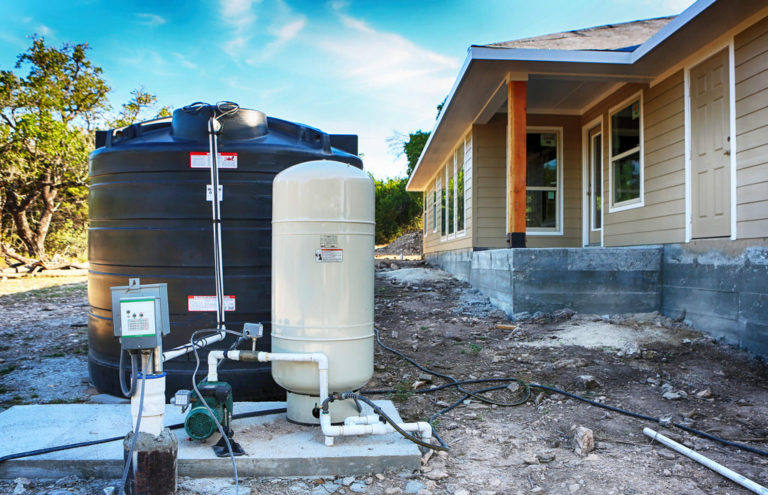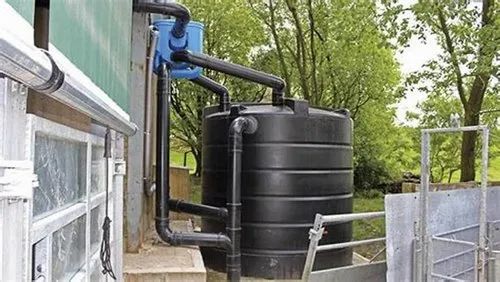Off-grid water treatment is becoming increasingly popular as more people seek sustainable solutions for their drinking water needs.
One such solution is purifying creek and river water for consumption, which not only provides a reliable source of clean water but also reduces the carbon footprint associated with traditional municipal water supply systems.
If you’re considering this option, there are several effective methods for purifying creek and river water that can be implemented at home or in remote communities.
We will explore these methods in detail and provide actionable information to help you get started on your off-grid water treatment journey.
Use a physical barrier
Install a sedimentation pond or a multi-media filter to remove suspended solids, bacteria, and other contaminants from the water.
A sedimentation pond is a large, man-made basin designed to capture and settle out suspended solids and other contaminants from the water.
As the water flows into the pond, it slowly settles to the bottom, allowing the sediment and contaminants to collect and be removed.
This process helps to clarify the water, reducing turbidity and improving overall water quality.
On the other hand, a multi-media filter is a more advanced treatment system that uses a combination of different media types to remove a wide range of contaminants from the water.
These filters typically consist of a series of tanks or vessels filled with different media, such as sand, gravel, and activated carbon.
As the water flows through the system, it passes through each of these media, removing impurities and contaminants as it goes.
This results in a high-quality filtered water that is safe for use in a variety of applications.
Both of these systems are effective at removing suspended solids and other contaminants from the water, but they operate in different ways and may be better suited to different situations depending on the specific needs and constraints of the project.
It’s important to carefully consider the specific requirements of your project and choose the most appropriate system based on those needs.
Add coagulants
Use chemicals like alum or ferric chloride to remove dirt and other suspended particles from the water.
To remove dirt and other suspended particles from your water, consider using chemical coagulants like alum or ferric chloride.
These chemicals work by neutralizing the charge on dirt particles and causing them to clump together, making them easier to filter out.
When added to the water, the alum or ferric chloride will react with the dirt and other suspended particles, causing them to coagulate and settle to the bottom of the tank or filter.
This process is often called coagulation and settling.
By regularly adding a dose of alum or ferric chloride to your water, you can effectively remove dirt and other suspended particles, resulting in cleaner and clearer water.
Note that the dosage and type of chemical coagulant used will depend on the specific water quality issues you’re trying to address, so it’s important to consult with a water treatment professional to determine the best course of action for your specific situation.
It’s important to follow all safety precautions when handling chemicals, and to properly dispose of any chemicals you use.
Use a flocculation/settling process
Add a flocculant like polymer or lime to the water and let it settle before draining off the clear water.
To effectively treat and clarify wastewater, it is essential to add a flocculant like polymer or lime to the water.
These agents help to aggregate and remove suspended solids, such as dirt, bacteria, and other impurities, from the water.
This process, known as flocculation, allows for the clear water to separate from the suspended solids, making it easier to remove the impurities and produce cleaner water.
After adding the flocculant, it is important to let the water settle for a period of time, allowing the suspended solids to coagulate and settle at the bottom of the treatment tank.
This process can take anywhere from a few hours to several days, depending on the type of flocculant used and the amount of suspended solids in the water.
Once the suspended solids have settled, the clear water can be drained off, leaving behind a sludge that can be further treated and disposed of.
This sludge can be used as a nutrient-rich fertilizer or sent to a wastewater treatment plant for further processing.
By adding a flocculant and allowing the water to settle, wastewater can be effectively treated and clarified, producing clean water that is safe for reuse or discharge.
Use a sand filter
Bury a sand-filled container and let the water seep through, removing impurities as it passes through.
To purify water using this method, start by digging a hole in the ground that is slightly larger than the container you will be using.
Next, fill the container with sand, making sure to leave enough space at the top for the water to seep through.
Then, slowly pour the water into the container, allowing it to seep through the sand and into the surrounding soil.
As the water passes through the sand, it will remove impurities and contaminants, such as bacteria and viruses, leaving you with clean and safe drinking water.
This method is effective because the sand acts as a natural filter, trapping the impurities and allowing the clean water to pass through.
By burying the container, you are creating a self-sustaining system that uses natural processes to purify the water, making it a reliable and sustainable solution for those in need of clean drinking water.
Implement a reverse osmosis system
Force the water through a semi-permeable membrane to remove impurities and produce clean drinking water.
To purify water using a semi-permeable membrane, you can force the water through the membrane to remove impurities and produce clean drinking water.
The semi-permeable membrane is a thin film that allows water molecules to pass through but blocks larger particles and impurities.
When you apply pressure to the water, it forces the water molecules through the membrane, resulting in the removal of impurities such as dirt, bacteria, and viruses.
The clean water that passes through the membrane is then collected, while the impurities are left behind, producing a clean and safe drinking water supply.
This method is effective and reliable, and can be used in a variety of settings, including homes, offices, and communities.
The semi-permeable membrane can be easily replaced or cleaned, making it a cost-effective solution for clean drinking water.
Use a ultraviolet (UV) system
Kill bacteria and viruses by exposing the water to UV light.
Exposing water to UV light is an effective method for killing bacteria and viruses.
UV light, specifically Ultraviolet C (UVC) light, has the ability to penetrate and damage the molecular structure of DNA and RNA, which are the genetic materials found in all living organisms.
When bacteria and viruses are exposed to UV light, their DNA and RNA are damaged, preventing them from replicating and causing illness.
In fact, UV light has been shown to be effective against a wide range of microorganisms, including E. Coli, Salmonella, and Influenza A.
The process of using UV light to kill bacteria and viruses is relatively simple.
Water is passed through a UV light source, which emits a specific wavelength of UV light.
The UV light is then absorbed by the microorganisms in the water, damaging their DNA and RNA and rendering them unable to cause illness.
This method is particularly useful for treating water in emergency situations or in areas where access to clean water is limited.
UV light is a chemical-free method for purifying water, making it a safe and environmentally friendly option.
Implement a ceramic water filter
Use a specialized filter that utilizes ceramic elements to remove impurities from the water.
If you’re looking for a reliable and effective method to purify your water, consider investing in a specialized filter that utilizes ceramic elements.
These filters offer a superior approach to removing impurities from your drinking water, delivering a cleaner and safer drinking experience.
The ceramic elements in these filters are designed to trap and remove impurities, including bacteria, viruses, and other harmful contaminants, leaving you with clean and purified water.
The ceramic material is highly porous, allowing it to capture and filter out even the smallest particles and molecules, ensuring that your drinking water is free from impurities.
Moreover, the ceramic elements in these filters are durable and long-lasting, requiring minimal maintenance and upkeep.
This means that you can enjoy a continuous supply of clean water without worrying about the filter losing its effectiveness over time.
The ceramic elements are resistant to wear and tear, ensuring that the filter can withstand the rigors of frequent use.
Overall, a specialized filter that utilizes ceramic elements offers a superior method for purifying your water.
With its ability to remove impurities and provide a constant supply of clean water, this filter is an essential investment for anyone looking to ensure their drinking water is safe and healthy.
Use distillation
Boil the water and then condense the steam, removing impurities as it cools.
To purify water using the evaporative method, you should start by boiling the water.
Boiling the water will help to remove any bacteria, viruses, and other impurities that may be present in the water.
Once the water is boiling, you should then condense the steam that is produced.
This can be done by placing a clean container under the pot or kettle and allowing the steam to condense and collect in the container.
As the steam cools, it will release any remaining impurities, such as minerals and salts, which can then be filtered out.
This process will leave you with purified water that is safe to drink.
It’s important to note that this method is best suited for water that is only slightly contaminated, as it may not be effective in removing all impurities.
However, it is a simple and effective way to purify water in a pinch.
Want More? Dive Deeper Here!
Hey there! If you’re the type who loves going down the rabbit hole of information (like we do), you’re in the right spot. We’ve pulled together some cool reads and resources that dive a bit deeper into the stuff we chat about on our site. Whether you’re just killing time or super into the topic, these picks might just be what you’re looking for. Happy reading!






